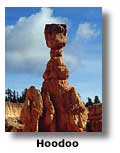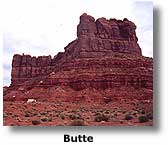
Experiment #2 Waterworks

This is a three-part experiment, students working in small groups will use their sandscapes to create their own desert terrain.
Part One demonstrates how quickly rain evaporates in the desert.
Part Two illustrates gullies, wadis, and canyons,
Part Three challenges students to form buttes, hoodoos and mesas using damp sand.
Before conducting this experiment allow students to visit the following sites to view the spectacular sand sculptures made by man.
Sandscapes Sand Sculpture http://sandscapes.com/archive/archive.htm
Sand Sculpture http://sandscapes.com/
There is not much water in a desert. But the water there helps shape the desert.
You Will Need:
1/4 cup measuring scoop, water, your sandscape, poultry baster, sand, large paper cups, salt shaker.
To Do:
1. Pour 1/4 cup of water into a slat shaker.
2. "Rain" the water on your desert.
How long did it take for the water to soak in?
What happened to the shape of the desert?
Desert rain doesn't last long. But usually comes in a downpour. It can cut through land like a bulldozer. Sometimes the rain makes temporary steam, called wadi.
Here's how to make one.
3. Make a shallow ditch from one end of your sandscape to the other by pressing the side of your hand in the sand.
4. Pour several cups of water into the wadi.
How long does the water last?
Take a look at the strange desert shapes in the three pictures below. Use some wet sand to make similar shapes with your hands.

A column or pillar of bizarre shape caused by differential erosion on rocks of different hardness.
To make the Hoodoo, first shape some flattened sand lumps out of damp sand. Make them different sizes. As you form each one, stack it on top of another, using a tiny bit of water to help them stick together.
 A
narrow flat-topped hill of resistant rock with
very steep sides. Probably formerly a mesa.
A
narrow flat-topped hill of resistant rock with
very steep sides. Probably formerly a mesa.
This time make even flatter patty-like sand lumps. Layer them side by side on their ends.
Put the shapes on your sandscape desert and let them dry.
Make and shape your own desert designs. Draw pictures of them on a piece of manila paper folded into three equal parts.